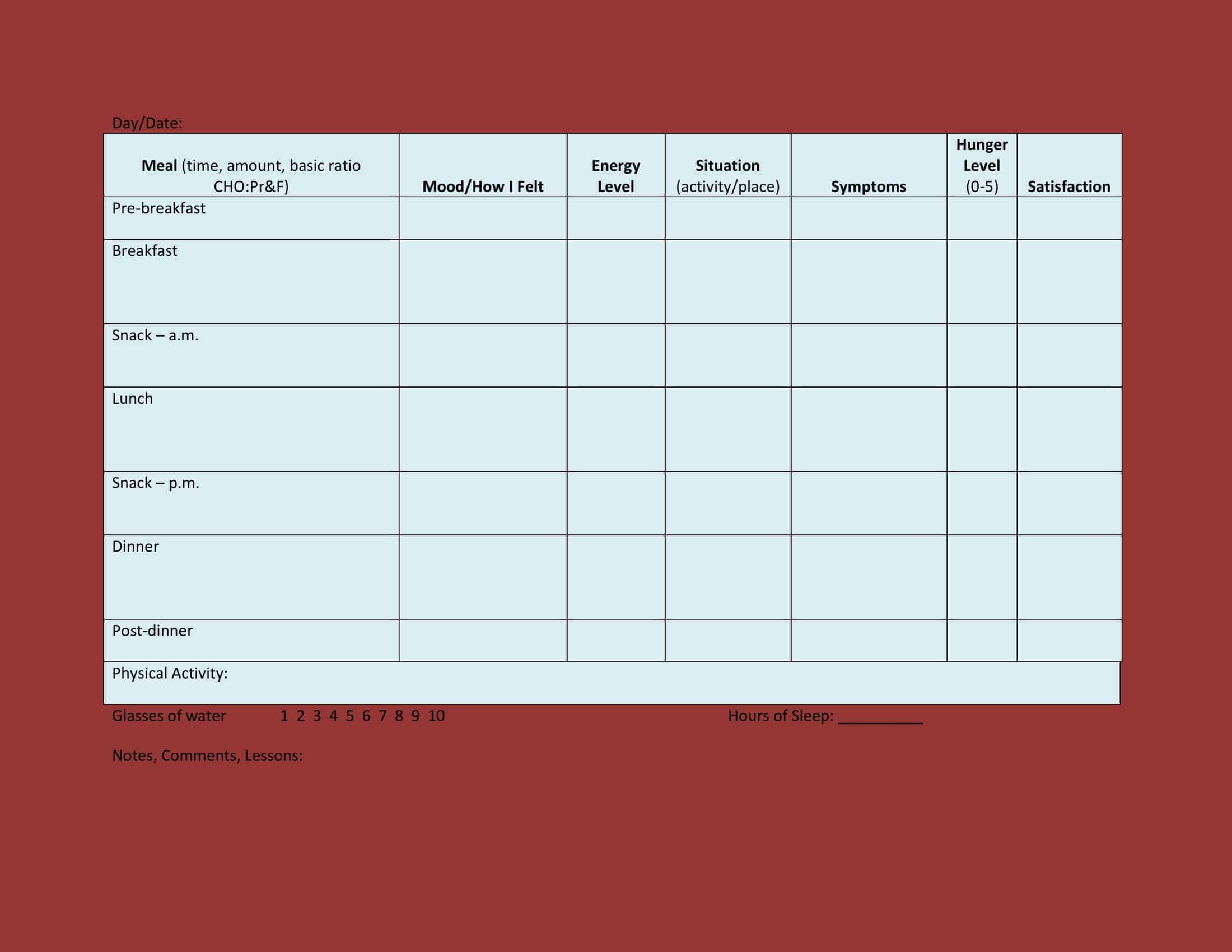Keeping a food diary is an effective way for me to track my eating habits and identify areas for improvement. That’s why having an easy-to-use printable food diary is so helpful.
I have included a free printable daily food diary template that makes recording meals and snacks a breeze. It allows me to monitor exactly what I eat each day.
The food diary is organized into sections for breakfast, lunch, dinner, and snacks. I can write in what I ate in each section and include important details like servings, calories, fat, carbs, protein, etc.

There is also space to jot down notes about how I felt, if I had cravings, or other factors that influenced my eating for the day. Reviewing this information helps me pinpoint patterns to create healthy changes.
I can print out multiple copies of the daily template to use each week. Filling out the food diary daily keeps me accountable and mindful of what fuel I put in my body.
Having this customizable printable food journal makes the process of tracking nutrition simple. I can carry it with me to easily record meals and snacks on-the-go. Analyzing my completed food diaries provides valuable insights to improve my diet.






































![Free Printable Credit Card Authorization Form Templates [PDF, Word, Excel] 1 Credit Card Authorization Form](https://www.typecalendar.com/wp-content/uploads/2023/06/Credit-Card-Authorization-Form-150x150.jpg)
![Free Printable Stock Ledger Templates [Excel,PDF, Word] 2 Stock Ledger](https://www.typecalendar.com/wp-content/uploads/2023/08/Stock-Ledger-150x150.jpg)
![Free Printable Financial Projections Templates [Excel, PDF] 3 Financial Projection](https://www.typecalendar.com/wp-content/uploads/2023/05/Financial-Projection-1-150x150.jpg)
